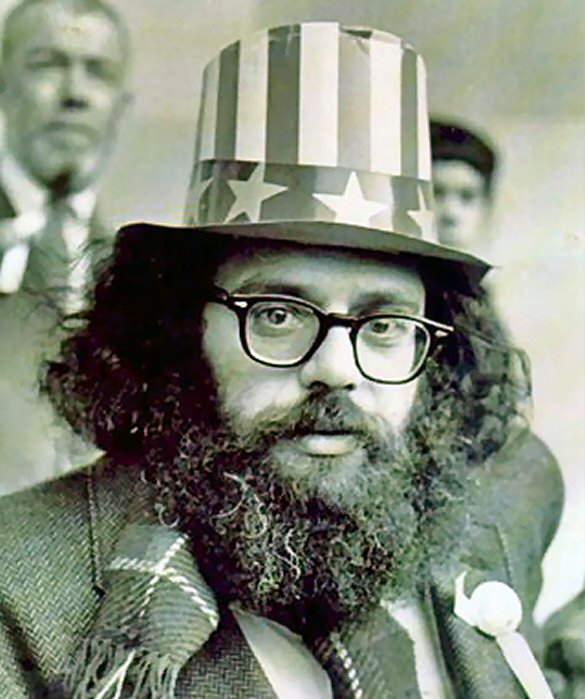

Each line was meant to be spoken in a single breath. Ginsberg uses a triadic verse form, the form used by his mentor William Carlos Williams, but he extends the lines out to his own long breath length. "Howl" does not keep the traditional meter or rhythm of a poem but is instead meant to be an extended diatribe or association and stream of consciousness writing. This is a theme that Ginsberg would return to throughout his career. To howl at the moon in poetic and artistic terms, then, is to announce that madness has entered into society and will not be silently put away. Medical opinions from the nineteenth century and before believed that persons who were mad or evil would naturally manifest these tendencies when the moon was full. The moon is also a symbol associated with madness. The artists of the Beat generation were like animals, instinctively wild and only allowed out at night into an underground scene of literature and jazz not accepted by more cultured members of society.

To howl is usually associated with animals howling at the moon, an image that Ginsberg wanted to convey. The title also expresses one of the major themes in the poem - that of madness. For a poet or the individual to howl, meant that that person was breaking from the habit of conformity to the virtues and ideals of American civilization and expressing a counter-cultural vision of free expression. Ginsberg wanted “Howl” to express the pent up frustration, artistic energy, and self-destruction of his generation, a generation that he felt was being suppressed by a dominant American culture that valued conformity over artistic license and opportunity. It will be a poem of noise and unsettling images and themes. The title of Ginsberg's poem prepares the reader for what to expect. Some of Part I documents Solomon’s struggle with insanity, while Part II is specifically dedicated to Solomon’s life and tragedy. Though Solomon was never a poet in the traditional sense (he did some minor writing), Ginsberg found real genius in his life and his insanity.

The poem’s subtitle, “For Carl Solomon,” dedicates the poem to his friend whom Ginsberg met in a mental institution.

“Howl” is best known for its first and second parts, though Ginsberg wrote a third part and a fourth part entitled “Footnote to Howl.” This fourth part was separate from the first three and titled this because it was a variation on the structure and rhythm of the first three parts. The poem gained wide celebrity in the Beatnik culture of San Francisco after the “Six Gallery reading,” an event organized by Ginsberg and the place where he first read Part I. It was Ginsberg’s first major work to be performed in public and published. “Howl” was written by Ginsberg in 1955 and finished in 1956.


 0 kommentar(er)
0 kommentar(er)
